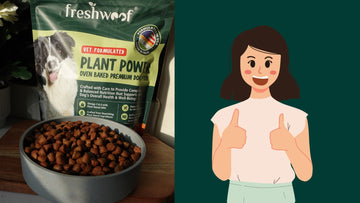Exercise is a fundamental part of a healthy lifestyle for dogs, just as it is for humans. Regular physical activity not only keeps dogs physically fit but also promotes mental stimulation and emotional well-being. Here’s why exercise is so crucial for your furry friend and some fun ways to keep them active.
Why Exercise Matters
- Physical Health: Regular exercise helps maintain a healthy weight, reducing the risk of obesity and related health issues such as diabetes, heart disease, and joint problems. It also strengthens muscles, supports cardiovascular health, and enhances flexibility and coordination. A fit dog is a happy dog – and a happy dog means fewer vet bills!
- Mental Stimulation: Dogs are intelligent creatures that need mental challenges to stay sharp. Exercise provides opportunities for mental stimulation, reducing boredom and the likelihood of destructive behaviors like chewing on your favorite shoes or digging up the flowerbed. A tired dog is a good dog!
- Emotional Well-being: Exercise releases endorphins, the "feel-good" hormones, which help alleviate stress and anxiety. A well-exercised dog is generally a happier dog, exhibiting fewer signs of anxiety and depression. Plus, those wagging tails and bright eyes are pure joy to see.
- Socialization: Exercise, especially in the form of walks and visits to dog parks, offers valuable socialization opportunities. Interacting with other dogs and people helps improve social skills and reduces fearfulness and aggression. Who doesn’t love a well-mannered pup who can charm everyone at the park?
Types of Exercise for Dogs
- Daily Walks: The classic walk around the neighborhood is an excellent way to keep your dog active. Aim for at least 30 minutes to an hour of walking each day, depending on your dog's breed, age, and fitness level. Remember to vary the route to keep things interesting for both of you – nobody likes the same old walk every day!
- Fetch: Fetch is a fantastic game that provides both physical exercise and mental stimulation. It can be played in your backyard, a local park, or even indoors with soft toys. Use a ball, Frisbee, or favorite toy to get your dog running and retrieving. Just watch out – some dogs might not understand the “give back” part of the game!
- Tug-of-War: Tug-of-war is a great way to engage your dog in a vigorous workout. This game helps build muscle strength and provides an outlet for their natural instincts. Ensure you use a sturdy, dog-safe rope or toy and supervise to prevent any accidental injuries. Just remember, the dog always thinks they win!
- Agility Training: Agility training involves navigating through obstacle courses that can include tunnels, jumps, weave poles, and more. It’s a fun and challenging way to exercise both the body and mind. Many dog training clubs and parks offer agility courses for dogs of all skill levels. Plus, it’s pretty hilarious to watch your dog weave through poles like a pro!
- Swimming: Swimming is an excellent low-impact exercise, particularly beneficial for dogs with joint issues or arthritis. It provides a full-body workout without stressing the joints. Always supervise your dog while swimming and ensure they are comfortable in the water. And who can resist a wet, happy dog shaking water all over the place?
- Hiking: For a more adventurous option, take your dog hiking. Trails provide varied terrain that challenges your dog physically and mentally. Bring plenty of water and be mindful of the weather and trail conditions. Hiking is a great way to bond with your dog while enjoying nature – just be prepared for some muddy paws!
- Interactive Toys: Interactive toys, such as puzzle feeders and treat-dispensing toys, can keep your dog engaged and active indoors. These toys require your dog to think and move to access the treats, providing both mental and physical stimulation. Who says you can’t have fun and eat treats at the same time?
- Doggy Playdates: Arrange playdates with other dogs. Social play is a fantastic way for dogs to burn off energy. It’s also an opportunity for them to learn important social cues and behaviors. Watching dogs play together is like watching a canine version of a rom-com – full of drama, excitement, and happy endings!
Effects of Under-exercising
Under-exercising your dog can lead to a host of physical, mental, and emotional issues. Here are some of the negative effects of not providing enough exercise for your furry friend:
- Obesity: Just like humans, dogs can gain excess weight if they don't get enough exercise. Obesity can lead to a variety of health problems, including diabetes, heart disease, and arthritis. An overweight dog might look cuddly, but the extra pounds can significantly shorten their lifespan and quality of life.
- Behavioral Issues: A dog that doesn't get enough exercise is more likely to develop behavioral problems. Boredom and pent-up energy can lead to destructive behaviors such as chewing on furniture, excessive barking, digging, and hyperactivity. These behaviors are often a dog’s way of expressing frustration and boredom.
- Depression and Anxiety: Lack of exercise can contribute to depression and anxiety in dogs. Without regular physical activity and mental stimulation, dogs can become lethargic and disinterested in their surroundings. Exercise helps release endorphins, which are natural mood enhancers, keeping your dog emotionally balanced and happy.
- Poor Socialization: Dogs that don't get enough opportunities to interact with other dogs and people can become fearful or aggressive. Regular exercise, especially in social settings like dog parks, helps improve a dog's social skills and reduces fearfulness and aggression.
- Health Problems: Under-exercised dogs are at higher risk for a range of health issues, including poor cardiovascular health, weakened muscles, and joint problems. Regular exercise helps keep their bodies strong and functioning properly, preventing many common health problems.
Tips for Safe Exercise
- Know Your Dog’s Limits: Every dog is different. Factors like age, breed, and health condition determine the type and amount of exercise they need. Puppies and young dogs generally require more activity than older dogs. Breeds with short snouts (brachycephalic breeds) may need less intense exercise due to breathing difficulties. Remember, quality over quantity!
- Start Slow: If your dog is new to exercise or hasn’t been active for a while, start slowly and gradually increase the intensity and duration. This helps prevent injuries and allows your dog to build endurance. Think of it as your dog's couch-to-5k training!
- Stay Hydrated: Always have fresh water available for your dog before, during, and after exercise, especially in hot weather. Dehydration can lead to serious health issues. Hydration is key – no one likes a parched pooch!
- Mind the Weather: Extreme temperatures can be dangerous. Avoid exercising your dog during the hottest part of the day in summer, and ensure they are properly protected in cold weather. Adjust the intensity and duration of exercise based on the weather conditions. Your dog might love the snow, but frostbite is no fun!
- Watch for Signs of Overexertion: Signs of overexertion include excessive panting, drooling, limping, and reluctance to continue. If you notice any of these signs, stop the activity and allow your dog to rest. Your dog won’t always know when to quit – sometimes, they just need a little help from their best friend.
Conclusion
Exercise is a cornerstone of a healthy, happy life for dogs. It helps maintain physical health, provides mental stimulation, supports emotional well-being, and encourages socialization. By incorporating a variety of activities into your dog’s routine and being mindful of their individual needs, you can ensure they remain active, engaged, and joyful. So, grab that leash, toss that ball, and head out for some fun – your dog will thank you with wagging tails, happy barks, and plenty of wet-nosed kisses





